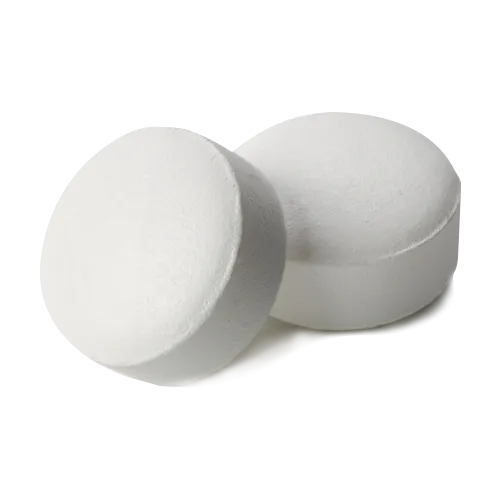Overview
Nizoral, generically known as ketoconazole, is an antifungal medication used to treat fungal and yeast infections, including athlete’s foot, ringworm, jock itch, and seborrheic dermatitis. Available in topical creams, shampoos, and oral tablets, it offers versatile treatment options for both superficial and systemic infections.
History of Development and Approval
Developed by Janssen Pharmaceuticals, Nizoral received FDA approval in 1981 for fungal infections. Its broad-spectrum efficacy and safety, supported by extensive clinical studies, have established it as a trusted antifungal therapy.
Key Benefits
- Broad-Spectrum Action: Effective against a wide range of fungi and yeasts.
- Multiple Forms: Creams, shampoos, and tablets allow targeted treatment.
- Rapid Symptom Relief: Quickly reduces itching, redness, and scaling.
- Preventive Use: Helps prevent fungal infections in at-risk individuals.
Unique Properties
Nizoral inhibits cytochrome P450 14α-demethylase, disrupting ergosterol synthesis in fungal cell membranes, leading to cell death. Its ability to treat both superficial and systemic infections makes it highly versatile.
Comparison with Similar Medications
Compared to other antifungals, Nizoral offers:
- Dual Purpose: Effective for both treatment and prevention.
- Broad Efficacy: Targets diverse fungal species, unlike some narrower-spectrum agents.
- Flexible Forms: Topical and oral options suit varied clinical needs.
Safety and Tolerability
Nizoral is generally well-tolerated. Topical forms may cause mild itching, redness, or irritation at the application site. Oral forms may lead to nausea, vomiting, or abdominal pain. Rare serious effects include liver toxicity or adrenal insufficiency, particularly with prolonged oral use. Regular monitoring ensures safety.
Indications for Use
Nizoral is indicated for:
- Tinea Infections: Athlete’s foot, ringworm, jock itch.
- Seborrheic Dermatitis: Scaly patches and dandruff.
- Systemic Infections: Candidiasis, histoplasmosis (oral form).
Dosage and Administration
Adults: Topical: Apply once/twice daily for 2–4 weeks. Oral: 200–400 mg/day for systemic infections. Shampoo: Use twice weekly for 4–8 weeks.
Children: Oral dosing per provider guidance; topical/shampoo safe for older children.
Elderly: Standard dosing, monitor liver function.
Timing: Topical/shampoo on clean, dry skin; oral with food.
Notes: Complete full course; avoid oral use in liver disease.
Mechanism of Action
Ketoconazole inhibits cytochrome P450 14α-demethylase, blocking ergosterol synthesis, increasing fungal cell membrane permeability, and causing cell death.
Composition
Active Ingredient: Ketoconazole, drives antifungal effects.
Inactive Ingredients: Tablets: cellulose, lactose; cream: propylene glycol; shampoo: sodium lauryl sulfate for stability.
Side Effects
Common: Topical: irritation, itching; oral: nausea, vomiting, abdominal pain.
Rare: Hair loss (shampoo), fatigue.
Serious: Liver toxicity, adrenal insufficiency require urgent care.
Prevention of Side Effects
Follow dosing instructions, monitor liver function (oral), avoid topical contact with eyes. Maintain hygiene to prevent reinfection; report symptoms promptly.
Contraindications
Avoid in hypersensitivity to ketoconazole, acute liver disease, or with drugs causing QT prolongation.
Warnings and Precautions
Monitor liver function (oral), check for allergic reactions. Caution in adrenal or liver dysfunction; avoid alcohol with oral use.
Drug Interactions
CYP3A4 inhibitors (e.g., ritonavir) increase ketoconazole levels; antacids reduce absorption; interacts with drugs like statins increasing toxicity risk. Disclose all medications.
Overdose
Symptoms: nausea, fatigue, liver issues. Seek emergency care immediately.
Pharmacokinetics
Absorption: Oral: pH-dependent, peak 1–2 hours; topical: minimal systemic.
Distribution: Protein-bound, limited tissue penetration.
Metabolism: Liver via CYP3A4.
Elimination: Feces, urine; half-life 2–10 hours (dose-dependent).
Dosage Forms
Tablets (200 mg), cream (2%), shampoo (1%, 2%) for targeted or systemic treatment.
Pregnancy and Breastfeeding
Use if benefits outweigh risks (Category C); minimal milk excretion, consult provider.
Storage
Store at 20°C–25°C (68°F–77°F), dry, light-protected, away from children. Dispose expired properly.
Clinical Evidence
Trials confirm Nizoral’s efficacy in clearing fungal infections, with rapid symptom relief and high cure rates across topical and systemic applications.
Conclusion
Nizoral is a potent, versatile antifungal for treating and preventing fungal infections, offering rapid relief and multiple forms. Follow dosing, maintain hygiene, and consult providers for optimal outcomes.




